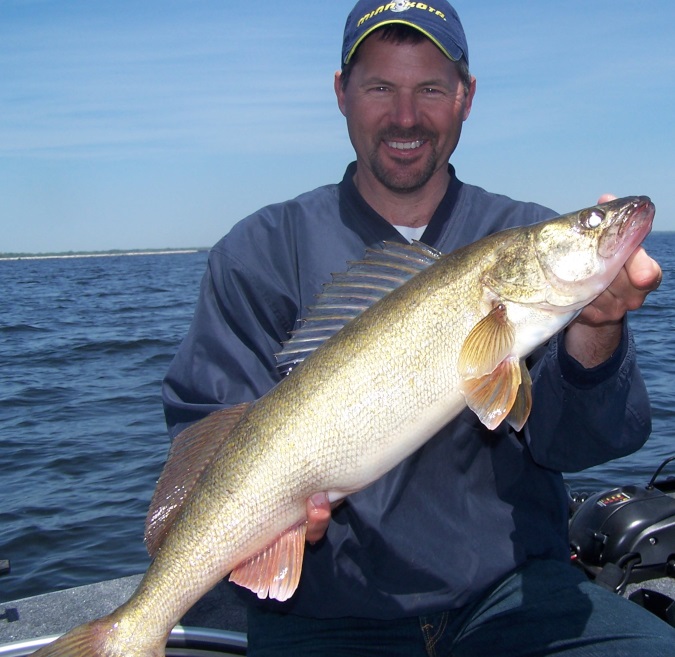 If you want to be successful when you go fishing, you need to first, find the fish. Once you’ve done that, you need to give them what they want to eat. If you do those two things, you’ll catch more fish more often.
If you want to be successful when you go fishing, you need to first, find the fish. Once you’ve done that, you need to give them what they want to eat. If you do those two things, you’ll catch more fish more often.
One really important thing to remember is that fish behave differently at different times of the year. Sometimes they want a bait that’s moving fast, other times they want a slower moving bait. In the spring when the water is cooler, a slow moving bait will usually catch more fish. Here are some ideas that will help you catch more fish in the next few weeks.
Jigs are perhaps the best presentation for walleyes in the spring. In many situations you’ll be fishing for walleyes over sand, gravel, and emerging vegetation. Dragging a jig/minnow combo will be a productive technique, and the best style of jig to drag will be a stand-up jig.
When you drag a jig, you’re casting the jig out, letting it sink to the bottom, then crawling, or dragging it back along the bottom. Frequent pauses in your retrieve will get reluctant fish to bite. You don’t want to be hopping the jig: A slow retrieve will be much better.
A stand-up jig does just that: When you pause the jig, it stands up on the bottom. A round head jig lays flat on the bottom at rest. The fish can see the minnow on the stand-up jig much better when the jig is sitting still, which increases your odds for getting bit. One of the most popular and effective stand-up jigs is the stand-up Fire-Ball jig.
Probably the best technique for presenting a bait slowly is by employing a slip-bobber. With a slip-bobber, you can hang a bait right on a fish’s nose.
The key to bobber success is figuring out how deep you should set the bobber, and how deep the bobber is set depends on where the fish are. If the fish are near the bottom, you want the bobber set so your bait is near the bottom. You want your bait just a little bit above the fish, because fish will move up to take a bait, but rarely will they go down to take a bait.
You can use a small jig or hook below the bobber, and to that you’ll attach live bait, probably a minnow but there are times when leeches will be better. If you’re after panfish, plastics can be very good on the jig. If you’re using plastics, you’ll need to impart some action by wiggling the rod tip. Live bait will provide its own action, and there are times when the action of live bait will be more productive. Trial and success are the best way to figure this out.
When jigging for walleyes, we’re going to be moving the baits slowly, so the fish are going to get a good look at the bait. And the take will often be soft, so we need a sensitive rod. 6 pound test Tactical fluorocarbon line on a Lew’s Custom Speed Stick Walleye Special rod will provide the invisibility and sensitivity that will enable us to catch more spring walleyes.
Once an angler understands that fish behave differently in different seasons, that angler will be more successful. Usually, if you move your bait slowly in the spring, you’ll catch more fish.
Photo Caption: A trip back in time: Here’s Dean Arnoldussen with a spring walleye that wanted the bait moved very slowly.
To see new and older episodes of Fishing the Midwest television, fishing articles and videos, visit www.fishingthemidwest.com
By Bob Jensen
